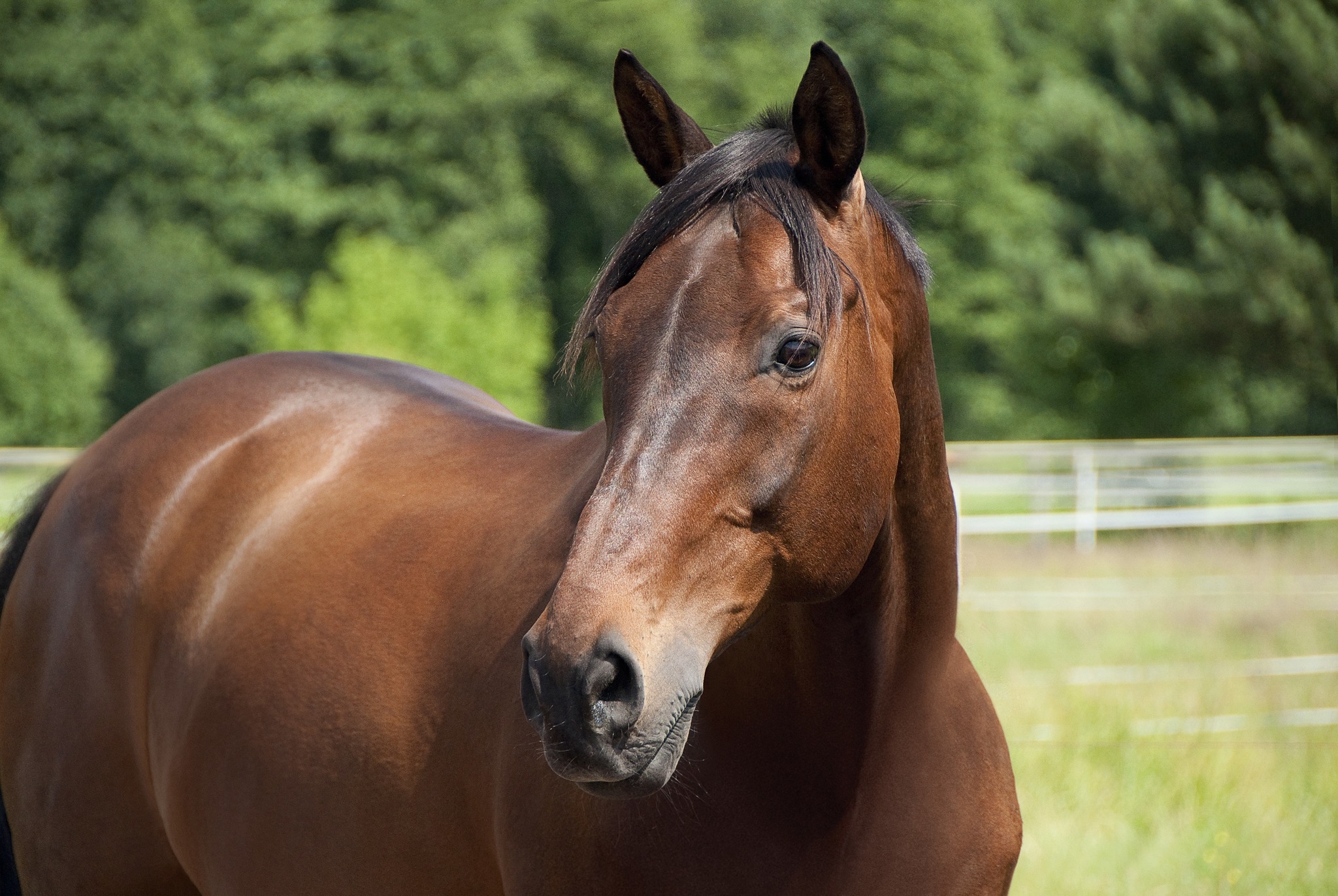Equine Protozoal Myeloencephalitis (EPM) is a neurological disease that can present in various ways, often making it challenging to recognize. The signs and severity of EPM can vary dramatically. Signs of EPM can progress rapidly or very slowly, but can cause serious damage and lasting neurological damage when left undetected or untreated. Identifying the symptoms early is crucial for effective treatment and management.
A tool to remember is the 3 “A”s of this disease defined by the AAEP: Asymmetry, Ataxia and Atrophy.
1. Asymmetry is a term to describe a symptom that is worse on one side of the body than on the opposite side.
2. Ataxia is when a horse experiences incoordination or the inability to know exactly where its legs are, resulting in inability to move its legs and body normally.
3. Atrophy describes a condition where the muscles shrink from their normal size. With EPM, this results from damage to the nerves that normally control or “innervate” these muscles. Muscle atrophy is not seen in all cases of EPM, so it is not as consistent a sign of disease as is the asymmetrical ataxia.
Here's a comprehensive look at what EPM might look like in your horse.
1. Changes in Movement and Coordination
- Difficulty Walking: The horse may have trouble moving smoothly, with noticable hesitations or an unsteady gaint. It might appear as if the horse is "drunk" or having trouble placing its feet properly.
- Stumbling: The horse could stumble frequently or drag its hind feet, particularly when walking on unevent terrian.
- Lack of Balance: The horse might stuggle with maintaining balance, especially when turning or changing direction. It might have a tendency to fall or lean to one side.
2. Muscle Atrophy and Weakness
- Asymmetrical Muscle Atrophy: Look for signs of muscle loss, particularly in the hindquarters. In some cases, one side of the body may appear more developed than the other.
- Weakness: The horse might show general weakness or difficulty with tasks that require physical effort, such as jumping or lifting its legs.
3. Behavioral Changes
- Altered Demeanor: The horse might become unusually irritable, anxious, or depressed. Behavioral changes often stem from discomfort or neurological impairment.
- Reduced Performance: A drop in performance or reluctance to participate in normal activities and training can be a sign. The horse may seem disinterested or less enthusiastic than usual.
4. Abnormal Posture and Gait
- Head Tilt: The horse could have a head tilt to one side, which indicates a neurological issue.
- Uneven Gait: The gait might appear uneven or irregular. The horse could have a tendency to circle or lean to one side, and its movement may seem disjointed.
5. Difficulty with Routine Tasks
- Foot Handling Issues: The horse might resist or have trouble lifting its feet for farriers or grooming, indicating a lack of coordination.
- Problems with Navigation: It might struggle to navigate obstacles or unfamiliar terrain, displaying hesitation or confusion.
6. Signs of Sensory Deficits
- Reduced Sensitivity: Decreased reaction to touch or changes in their environment can indicate sensory impairment.
- Inconsistent Responses: The horse may not respond consistently to cues or stimuli, which can be a sign of neurological disruption.
Horses generally deteriorate over time, but some may “level off” or plateau for a period of time only to worsen days, weeks or even months later. Most horses afflicted with this debilitating disease continue to have a bright, alert temperament.
What to Do if You Suspect EPM
If you notice any of these signs, it’s crucial to consult with a veterinarian who has experience with neurological conditions in horses. They will perform a thorough examination, which may include blood tests, cerebrospinal fluid analysis, and possibly advanced imaging to confirm the diagnosis and develop an appropriate treatment plan.
Early detection and treatment are vital in managing EPM. With the right care, many horses with EPM can improve and return to their normal activities.
By being vigilant and observant, you can help ensure that any potential issues are addressed promptly, providing the best chance for a positive outcome for your horse.

